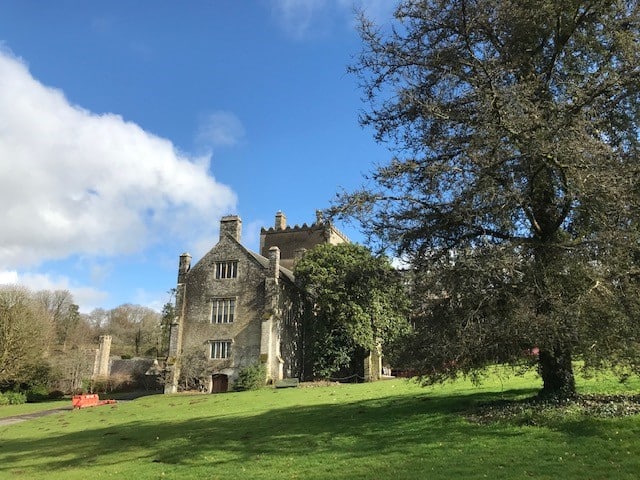
Buckland Abbey
- About this route
-
Buckland Abbey, which is now a National Trust property, has a particularly interesting history, transforming from a medieval abbey to a country house owned by 16th century Elizabethan nautical notoriety.
It was founded as a Cistercian Abbey in 1278, a daughter house of Quarr Abbey on the Isle of Wight. It was the last to be built in medieval England and the most westerly institution of its kind. The resident monks not only led an ascetic life but they were also skilled agriculturalists, overseeing five granges as well as the Abbey’s home farm. One of the most striking medieval standing buildings to be seen at Buckland Abbey is the 15th century Tithe Barn, where the Abbot stored the agricultural surplus paid as rents and dues.
The Dissolution of the Monasteries by Henry VIII between 1536 and 1541 saw the fortunes of Buckland Abbey shift. In 1541 King Henry sold the abbey to Sir Richard Grenville, who had formerly served as the king’s Marshall of Calais. Sir Richard together with his son, Roger set about converting the remains into a private house, now called Buckland Grenville. Roger Grenville’s place in Tudor history was sealed upon his death. He captained the Mary Rose during battle with the French and sank with the ship in 1545. Richard Grenville died in 1550 and the property was inherited by his grandson, also Richard. Richard spent his early adult life privateering and it wasn’t until 1574, after his plans for an expedition to South America were scuppered that he returned to Buckland to complete its conversion into a country house. The cloisters and other monastic buildings on the north side of the church were demolished and the church itself was converted into a house. Upper floors were inserted, the space beneath the crossing was transformed into the great hall with a decorated plaster ceiling and a kitchen wing with a large open hearth was added at the east end. Despite alterations in the Georgian period and restoration after a fire in 1938 it is Richard Greville’s 16th century mansion that we largely see today.
In 1580 though Richard put the estate up for sale and returned to a life at sea. He led an expedition to Virginia in 1583 and sent five of ships to fight the Spanish Armada in 1588. He finally fell at the battle of Flores off the Azores in 1591, when his ship Renown (Sir Francis Drake’s Armada flagship) was surrounded by a superior Spanish fleet.
By strange coincidence the Buckland estate was bought by Sir Francis Drake (c.1540-1596), perhaps the most famous or infamous Elizabethan naval commander. An explorer, privateer and slave trader, he was nicknamed El Draque (The Dragon) by the Spanish. It is said that King Philip II of Spain offered 20,000 ducats for his capture or death. Drake paid for the Abbey out of wealth amassed from plundering Spanish ships and territories in the Pacific during his circumnavigation of the world onboard The Golden Hind in 1577-1580. Ironically, this was the same expedition that Grenville had hoped to undertake in 1574. Drake was knighted by Queen Elizabeth I in 1581 and went on to become Lord Mayor of Plymouth. He lived at Buckland Abbey until his last, unsuccessful, campaign to Spanish America where he died, of dysentery, after losing the Battle of San Juan. He was buried at sea, off Portabelo, Panama.
Drake does not appear to have made many alterations to the Abbey during the 15 years that he lived there, although in the Tower Room is a fireplace with an ornate overmantel bearing Drake’s personal Coat of Arms and the Latin inscription Sic Parvis Magna (‘thus great things from small’).
Apart from a brief return to Grenville ownership during the English Civil War, Buckland Abbey was to remain in the Drake family ownership until 1946 when it was purchased by Captain Arthur Rod who presented it to the National Trust. The abbey opened to the public in 1951.
- Getting Around
-
Buckland Abbey is owned by the National Trust. Information on opening times, admission charges, facilities and access is available on the National Trust website.
By bus: It is possible to reach Buckland Abbey by using the Oakleys Coaches service 55, which runs several times a day, Monday to Saturday, between Yelverton and Milton Combe. Timetables are available at Travel Devon .
By road: Signposted ‘Buckland Abbey’ along the A386 Plymouth to Tavistock road. A large free car park, including Blue Badge spaces, is available.
- Facilities
- Terrain
- Accessibility

